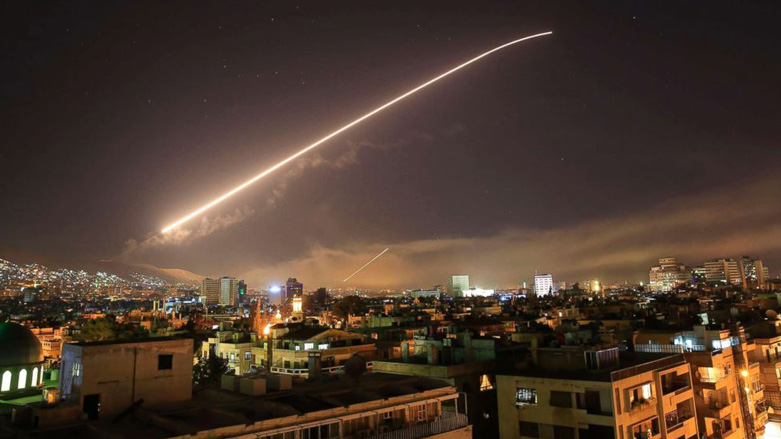Pentagon explains Coalition strikes on chemical facilities in Syria

WASHINGTON DC (Kurdistan 24) - The US, along with its allies, France and Britain, attacked three chemical weapons sites early Saturday morning in Syria.
The punitive coalition strike took place roughly a year after the US attacked Syria with 59 Tomahawk missiles in response to Damascus’ use of sarin gas in the rebel-held town of Khan Sheikhoun.
The Saturday morning strike was “a little over” twice as large as the US attack last April, Secretary of Defense Jim Mattis told reporters in a late night Pentagon briefing, shortly after the coalition assault on Syria ended.
It seems to have lasted around an hour: between President Donald Trump’s televised address at 9:00 PM, announcing the start of the attack, and the Pentagon briefing at 10:00 PM that followed its end.
Gen. Joseph Dunford, chairman of the Joint Chiefs of Staff (JCS), explained that three sites had been attacked.
The first target was a military facility located in the greater Damascus area that served as “a center for the research, development, production and testing of chemical and biological warfare technology,” Dunford said.
The second objective was a chemical weapons storage facility west of Homs, which Dunford said was a “primary location” where Syria stored sarin and the chemical precursors for sarin.
The third target, located near the second one, was a chemical weapons equipment storage facility and “an important command post.”
The two senior Pentagon officials stressed the care with which the operation was planned. “In conducting these strikes, we have gone to great lengths to avoid civilian and foreign casualties,” Mattis affirmed.
The assault was also tightly focused. “The targets that were struck and destroyed were specifically associated with the Syrian regime’s chemical weapons program,” Dunford stated.
The Pentagon believes the result of the strike will be “the long-term degradation of Syria’s capability to research, develop, and employ chemical and biological weapons,” the JCS Chairman explained.
“Important infrastructure was destroyed,” Dunford stated. Syria “will lose years of research and development data, specialized equipment, and expensive chemical weapons precursors.”
Armed resistance to the attacks was minimal—limited to some “initial” surface to air missiles fired by the Syrian regime, Dunford said.
The Pentagon has little appetite for further engagement in the Middle East, and both Mattis and Dunford strongly emphasized that the coalition strike was about Assad’s use of chemical weapons and deterring him (and others) from using them in the future.
If Assad, does not resort again to chemical weapons, “This is a one-time shot,” Mattis affirmed.
Asked whether the coalition had considered hitting Iranian targets, the Secretary of Defense reaffirmed that the only targets that had been considered were those “designed to address the chemical weapons threat.”
Speaking an hour before the Pentagon briefing, President Donald Trump underscored the horror that such weapons pose.
“By the end of World War I, more than one million people had been killed or injured by chemical weapons. We never want to see that ghastly specter return,” he stated.
Saddam Hussein regularly used chemical weapons against the Kurds, most notoriously in Halabja. Certainly, Kurds do not need to be persuaded of their unusual terror.
However, Baghdad evidently sees things otherwise. On Friday, while at an Arab Foreign Minister’s conference in Riyadh, Ibrahim al-Jaafari criticized the planned coalition attack, saying, “If you strike Syria, it is a disaster.”
